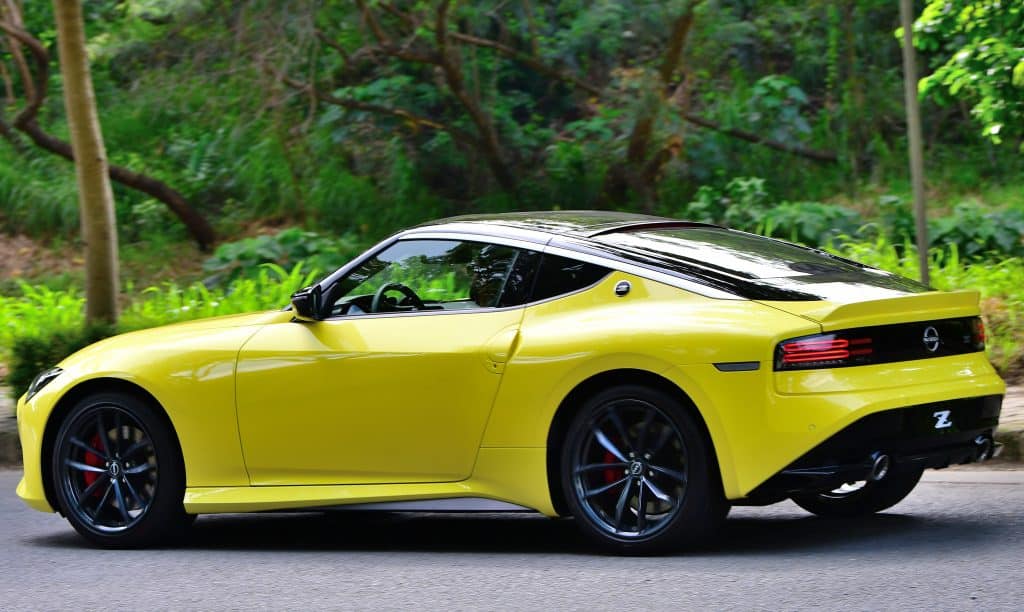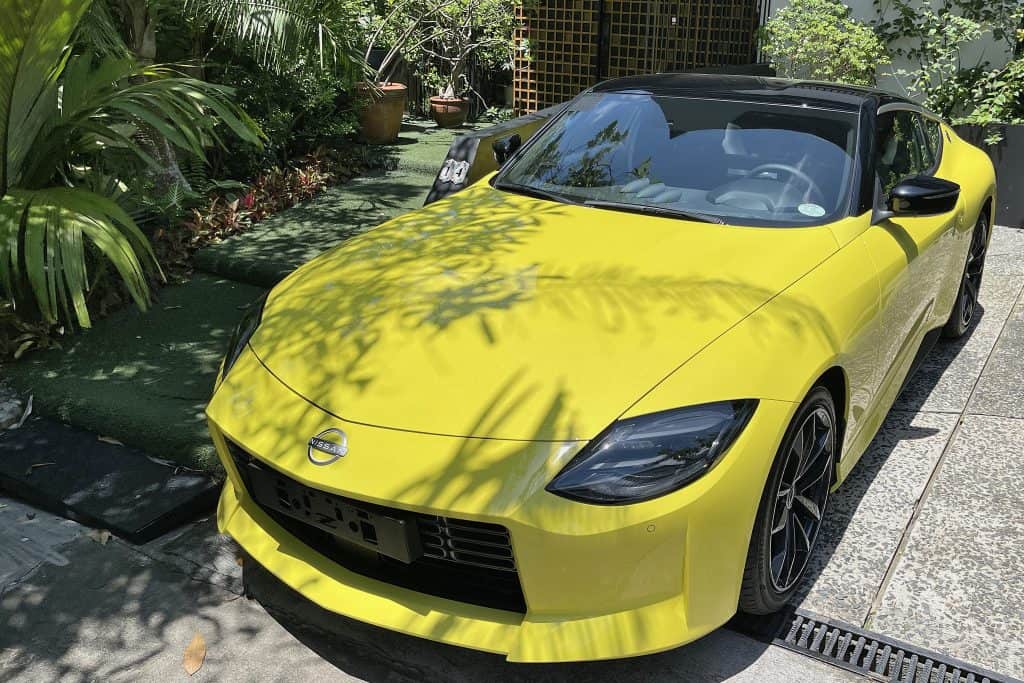The launch car you see here, in the exquisite two-tone Ikazuchi Yellow TriCoat (aka Thunder Yellow) with the contrasting Super Black glossy roof divided beautifully by the Katana blade roof finisher, is every Z fan’s dream realized. It may be perceived by critics to be a reskinned Z with a new heart, which is fairly accurate in its bare essentials, but that is hugely diminishing the final result of a tremendous effort to build on a very successful Nissan FM foundation.
The basic chassis may be the same with an identical wheelbase and also about the same cabin proportions, but the only real performance part carryover are great ones; the brilliant Akebono brake components. Almost everything else has been either completely changed, upgraded, or honed to the tune of over 80% new parts and increased overall rigidity by about 11%. The increase in rigidity may seem modest but you have to take into account that Nissan also added significantly more sound and vibration insulation combined with enhanced active sound acoustics resulting in the quietest Z cabin ever with the best fit and finish it has ever had while it performs at new dynamic levels of excellence and driver enjoyment.
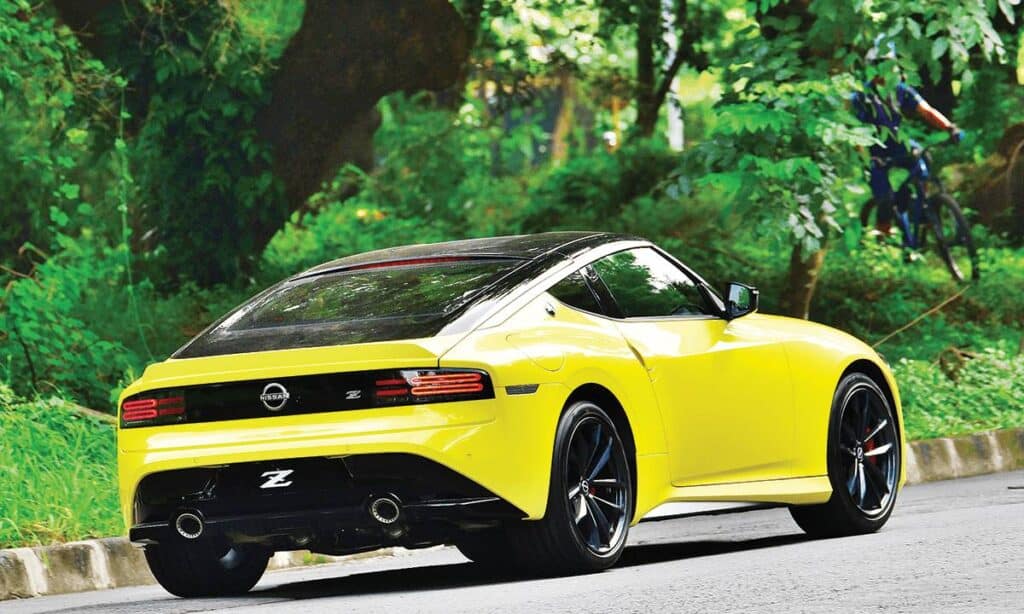
The 7th-generation Nissan Z (400Z) uses the sensational 400 bhp / 350 lb-ft twin-turbo 3.0-liter V6 engine that we first experienced over 7 years ago in the 2+2 Infiniti Q60S Red Sport 400 luxury coupé that was mated to a 7-speed automatic gearbox, had over a foot longer body on a foot longer wheelbase, weighed over 300 pounds more, had the same Akebono brakes, and rode on much less rubber. Getting behind the steering wheel of any Nissan Z car is always a thrill and always an occasion; I have yet to have a dull moment in one. Since 1969, Nissan has been manufacturing their own unique interpretation of mechanical bliss, and for years at one point, they soldiered on as the only torchbearer for pure Japanese sports cars.
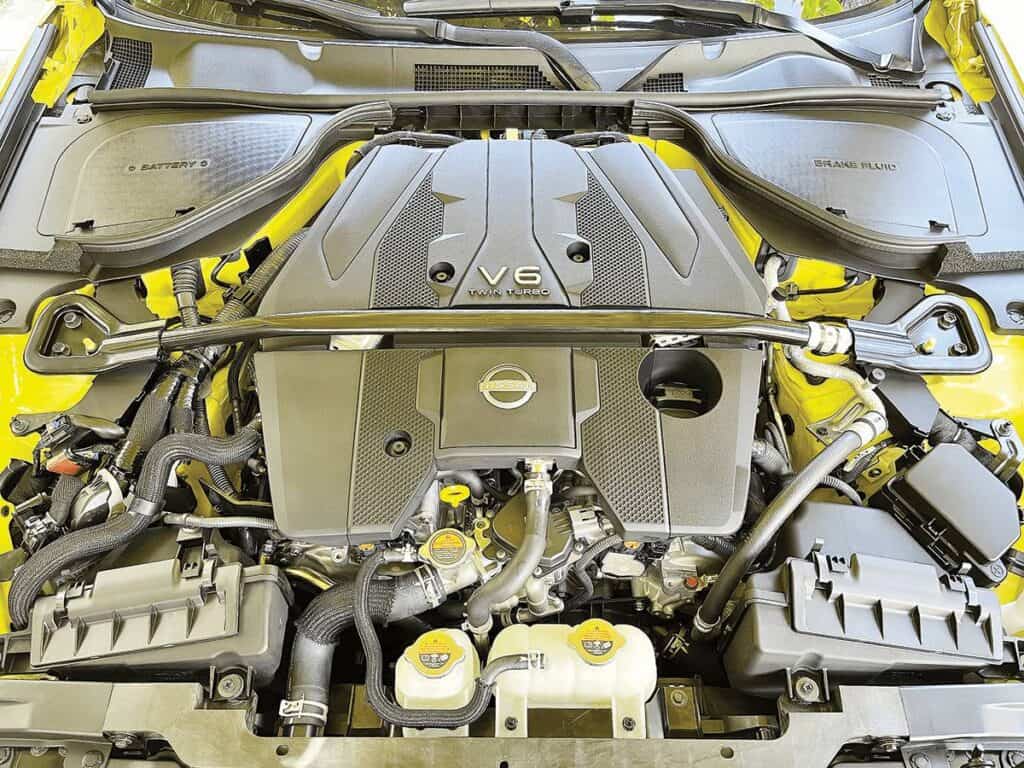
The new Nissan 400Z does feature a factory standard carbon-fiber composite driveshaft combined with a mechanical viscous limited slip differential but only with the slick new 6-speed manual with SynchroRev Match at the same price as the automatic at PhP 3,888,000.00. For optimal performance more than engagement, the new Mercedes-Benz (9G-Tronic) shared Jatco 9-speed automatic gearbox more than makes up for losing the extra response from the composite shaft. With the new 9-speed gearbox optimizing the potent power from the smaller and lighter twin-turbo 3.0-liter V6 compared to the outgoing 3.7-liter V6 that produced 350 bhp @ 7400 rpm and 276 lb-ft @ 5200 rpm at its best in NISMO form, acceleration from 0 to 100 km/h improved from 5.1 seconds to 4.5 seconds (with a top speed of a governed 250 km/h) while gaining an additional 1 mpg in city and 2 mpg on the highway driving despite weighing about 116 pounds more due to the expansive upgrades and new design.
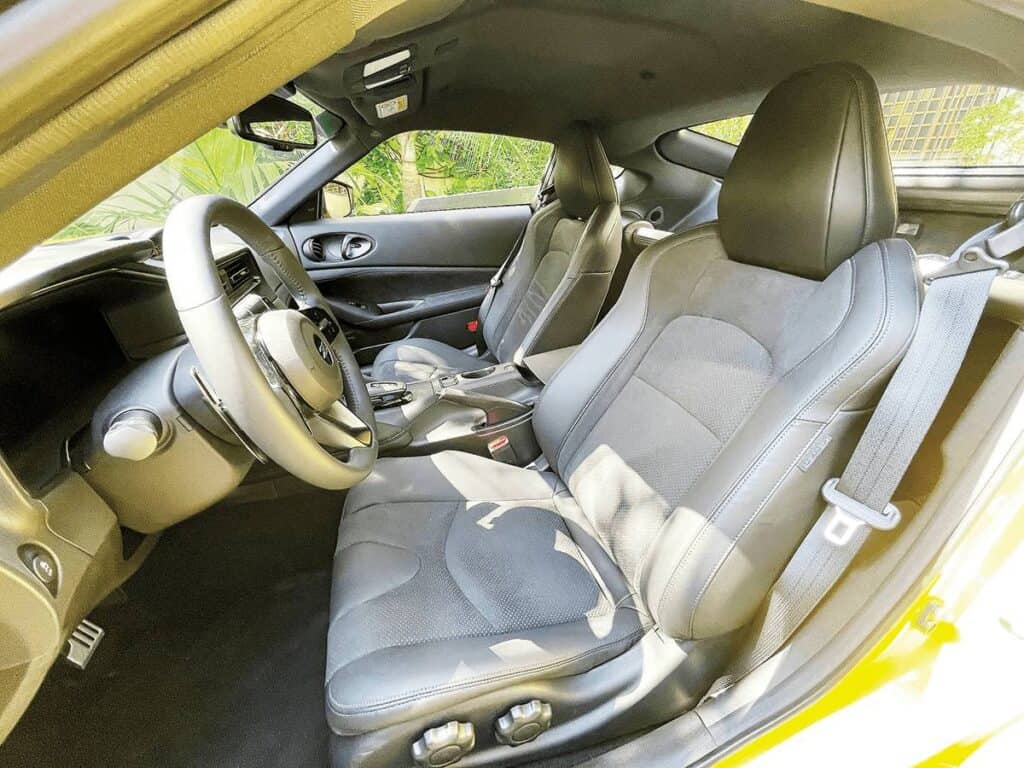
The 400Z’s powerband is significantly more elastic than the outgoing 370Z NISMO, making it much less tiresome to drive on a daily basis while quantumly improving its dynamic ability when driven enthusiastically. Peak torque is 74 lb-ft more and begins at 1600 rpm and holds it until 5200 rpm. While maximum horsepower is 50 more at 1000 rpm less engine speed and redlines lower at 6800 rpm compared to the screaming 7400 rpm, which I do admit does sound and feel great though.
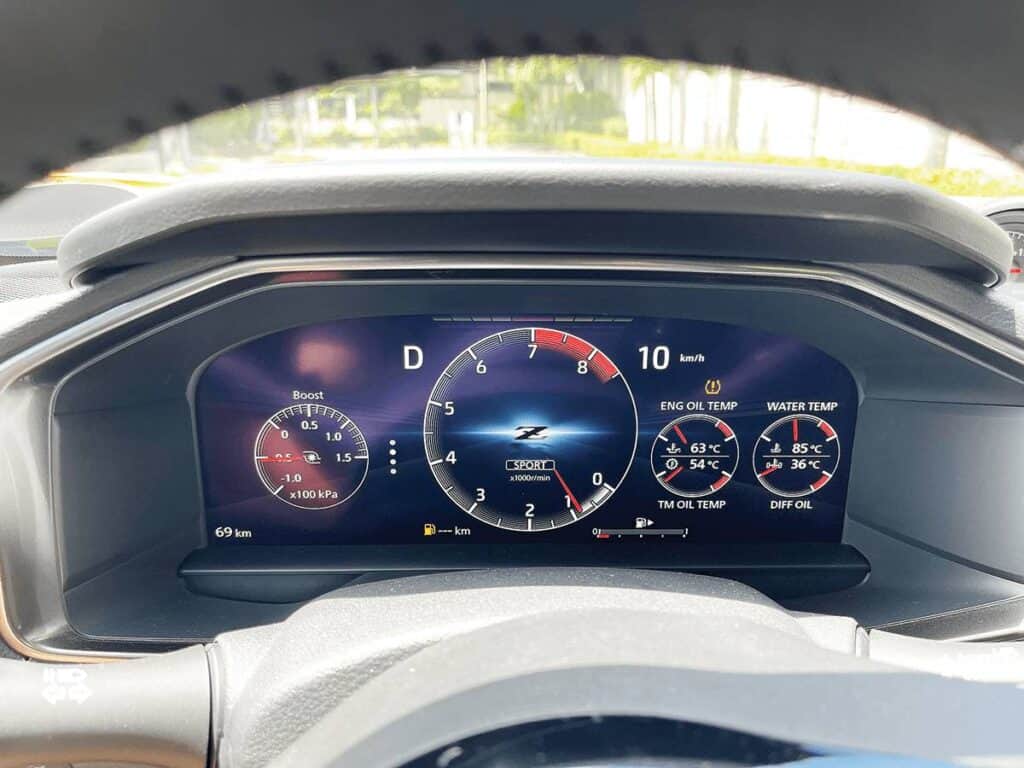
The gorgeous homage to the past generations of the Z begins with the two half-circle LED DRL slashes on the excellent LED headlights that recalls the closed lenses featured on the Japan-only 1971 Datsun 240ZG Fairlady. The tapered front end, subtle power dome on the aluminum hood (the doors and rear hatch are also aluminum), and center dividing ridge are all found on the first-generation Z. The more squared-off rear and cool three-dimensional taillight cluster are inspired by my favorite Z, until this new model, the 90’s twin-turbo 300ZX. The gaping manta ray mouth center rectangular grille is also inspired by the 240Z, I like the tasteful gun-metal upper portion of the grille where the license plate and two front sonar sensors lie as well. Overall, the semi long-hood and short-deck silhouette that helped make the original car’s shape so iconic and endearing is represented in a collective and very attractive way whether one appreciates the generations leading up to it or not.
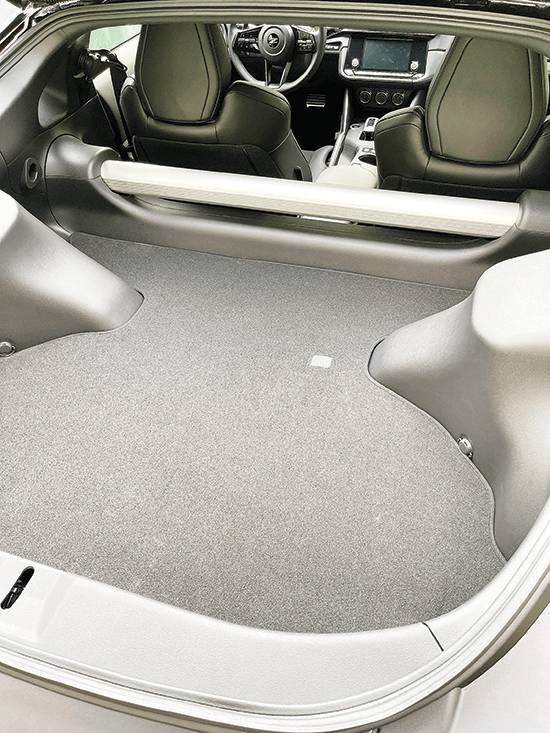
The interior however is a mixed bag, the design and layout association with its predecessor is very obvious but just so much better executed with considerably better materials (synthetic suede door panel inserts) and screens, however our market for now may only get the black interior and not the contrasting-colored options. The power-adjustable sport seats with faux-suede upholstery are very supportive and the most comfortable ever in a Z. The analog gauges have been replaced with a crisp user-configurable 12.3-inch digital gauge display (designed with input from Tsugio Matsuda, a racer for NISMO in Super GT in Japan) while the infotainment system uses the standard 8.0-inch display (a crisper 9.0-inch unit with navigation is optional) powered by a great sounding 8-speaker Bose audio system, though Apple CarPlay and AndroidAuto connectivity are wired. The climate control buttons and seat heaters are traditional together with an old-school manual e-brake. The fully adjustable steering wheel (with telescopic adjustment finally) is inspired by the GTR supercar slayer and actually uses the aluminum paddleshifts from it. The throttle and brake are aluminum-trimmed. A sliding center armrest reveals a second cupholder, while a dedicated phone holder with USB ports is conveniently located at the bottom of the center stack. The shift-by-wire transmission controller isn’t bad nor is it great, but the functionality of the actual system is fabulous. The last feature that ties it all together is the iconic angled triple gauge cluster that displays analog turbo boost, turbine speed up to 240,000 rpm, and voltage.
There are only two drive modes: Normal and Sport. And you can switch off traction control in a straightforward dashboard button to the left and bottom of the steering wheel. With sport mode engaged, the Z responds with quicker shifts, a livelier and more-responsive throttle, firmer steering effort, the stability-control settings are more liberating, and enhanced engine sounds fill the cabin. The exhaust sound even in full throttle is not as street-level obnoxious as before and the dual exhausts look great now with extra drilled holes surrounding the lip instead of looking like open paint cans.
The beautiful Rays forged mixed alloys are awesome and I think the current Bridgestone Potenza S007 B-silent tires (P255/40R19 front and P275/35R19 rear) are perfect for our driving conditions. They take the beating of our roads well while still being tenacious when needed. In the end the new Nissan 400Z exceeded all expectations with performance and aesthetics. The full aluminum suspension may not have adaptive functions but it embodies the Z with precise handling, compliance, and driving entertainment. The thrust of the eager and potent twin-turbo V6 is intoxicating. The Nissan 400Z is not just the greatest Z but it is also the very best sports car that you can buy and enjoy on a daily basis in our market.


